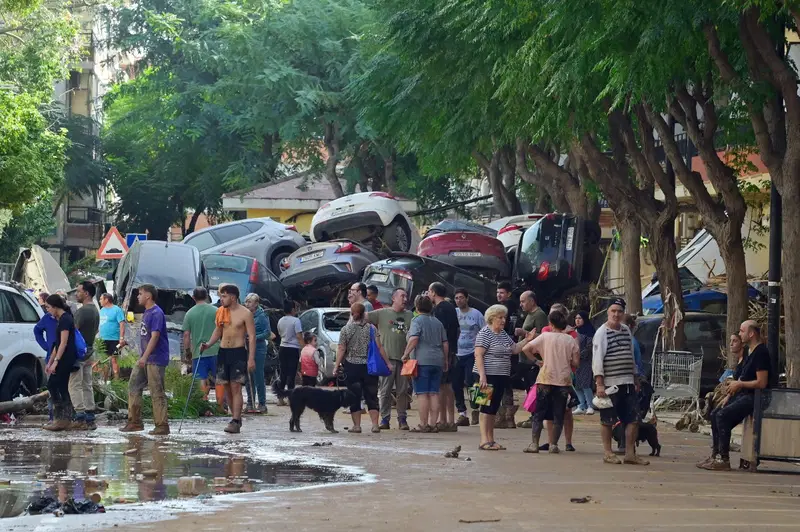The death toll from the recent Spain flood has risen to 158, marking one of the most tragic natural disasters the country has faced in decades. Heavy rains triggered by an intense Mediterranean storm began on Tuesday, transforming normally dry streets into raging rivers, especially affecting the eastern Valencia region. Emergency services and local officials are working tirelessly to find survivors among the wreckage.
The hardest-hit area, Valencia, has so far accounted for 155 of the confirmed fatalities. Meanwhile, additional casualties have been reported in the regions of Castilla-La Mancha and Andalusia, where officials confirmed three deaths combined.
Authorities have warned that the number could climb even further, with many people still unaccounted for and some affected areas remaining inaccessible due to widespread flooding and debris blocking roads.
Prime Minister Pedro Sanchez has pleaded with citizens to take extreme caution, urging, “Please, stay at home and follow the calls of the emergency services.” He emphasized the focus remains on “saving as many lives as possible” across the hardest-hit regions, including the Valencia and Castellon provinces.
Spain’s King Felipe VI also expressed his concern, highlighting that the emergency is “still not over.” As part of the government’s response, the national weather agency, AEMET, issued high-alert warnings across the eastern and southern parts of the country on Thursday, anticipating more rain in areas already facing severe flood conditions.
Throughout Spain, flags are flying at half-mast on government buildings, and the country observed minutes of silence in honor of the victims as part of a national three-day mourning period. These floods are Spain’s deadliest in recent history, leaving communities devastated and many survivors struggling to cope with the aftermath.
Eyewitnesses have recounted horrifying scenes. Eliu Sanchez, a resident of a Valencia suburb, described the relentless floodwaters sweeping away people and vehicles alike. “I have been told of people who were clinging to trees, but the force made them let go and they were carried away, calling for help,” he said.
In towns throughout Valencia, roads remain covered in thick mud and debris, and emergency services are using drones and deploying over 1,200 troops to locate survivors. Vehicles are piled atop one another, abandoned by owners who tried to escape. AFP journalists reported residents struggling through thick mud in a desperate attempt to reach safety or retrieve belongings.
In the devastated Valencia suburb of Paiporta, musician David Romero, 27, described the catastrophe as unprecedented. “Neighbourhood after neighbourhood, street after street, there is not a business standing,” he told reporters, describing the scale of damage to homes, businesses, and infrastructure.
Many displaced residents are now relying on temporary shelters for housing as the floods have heavily impacted transportation networks, with roads closed and train services disrupted. Transport Minister Oscar Puente warned that it could take up to three weeks to restore high-speed rail service between Madrid and Valencia.
Climate scientists have pointed to human-driven climate change as a factor that could be increasing both the frequency and intensity of such severe weather events. Additionally, the disaster has sparked a political debate, with local leaders and national officials exchanging criticism over emergency preparedness and response measures.









